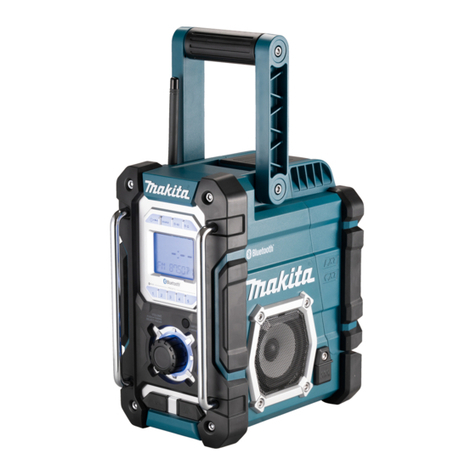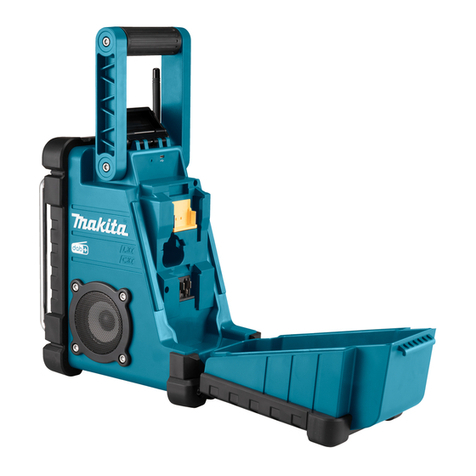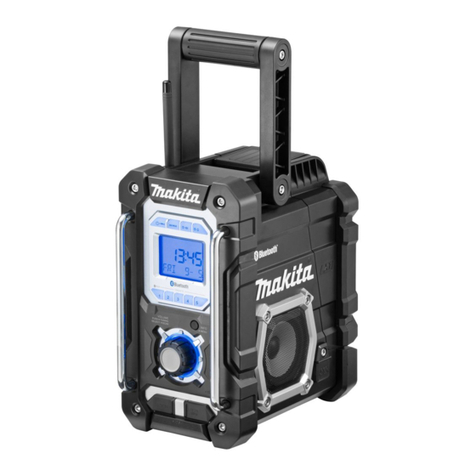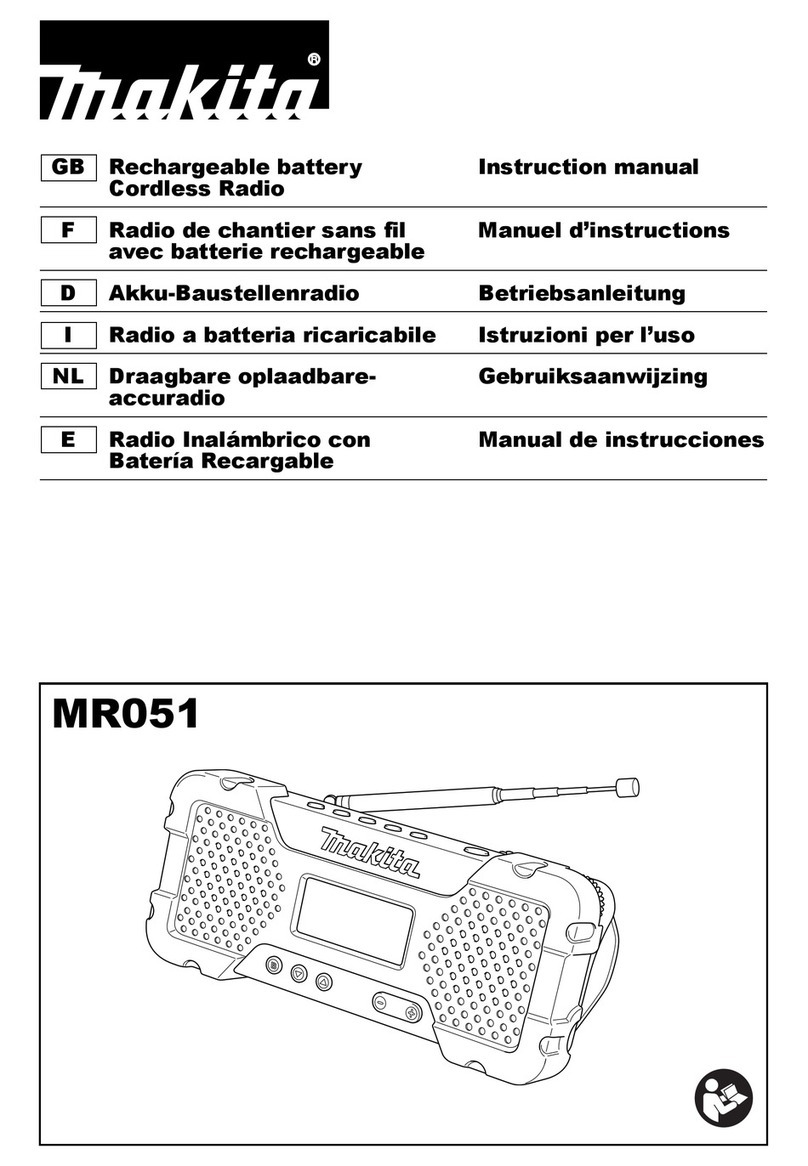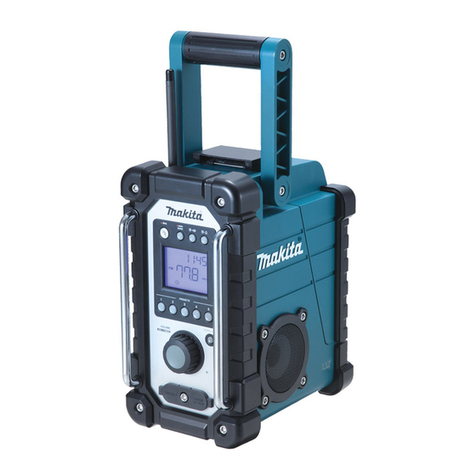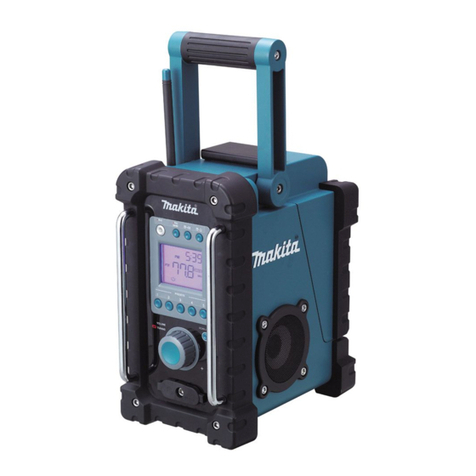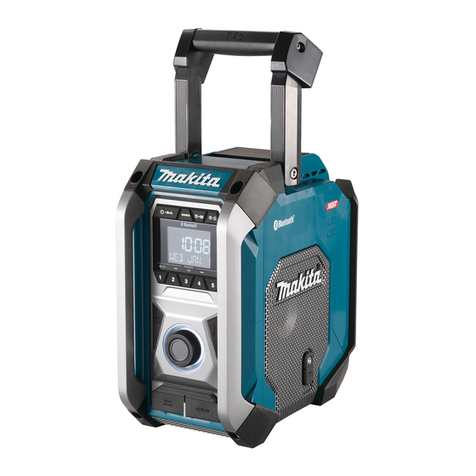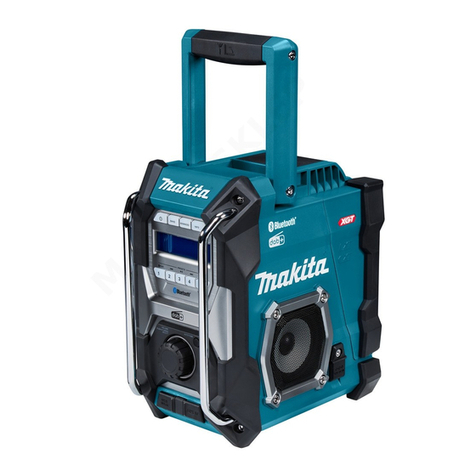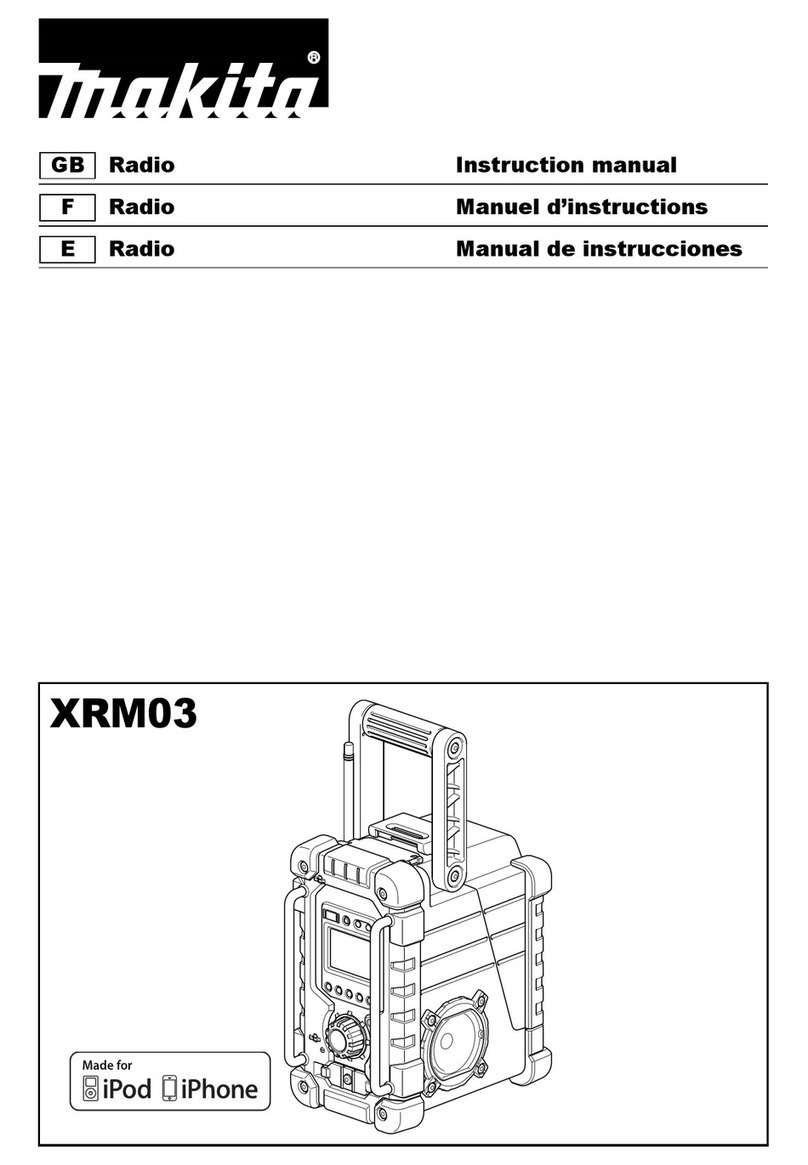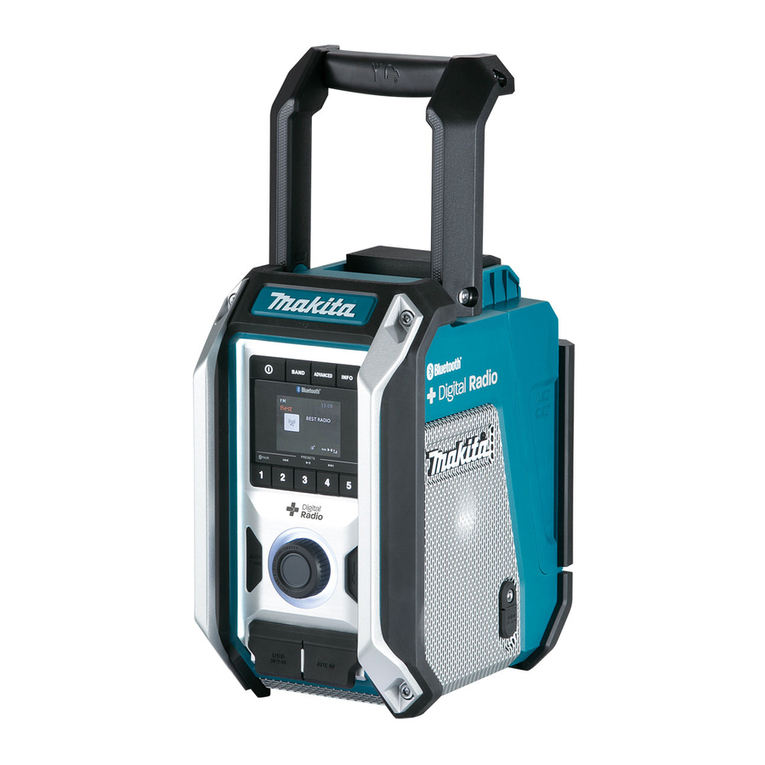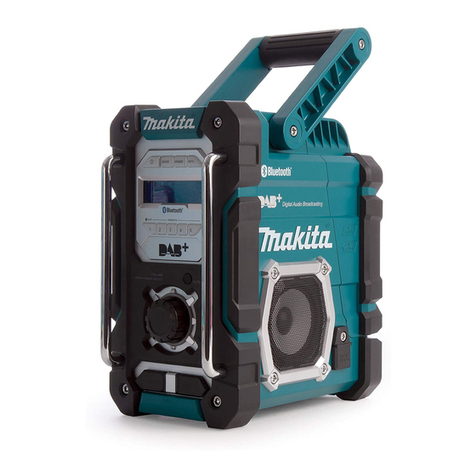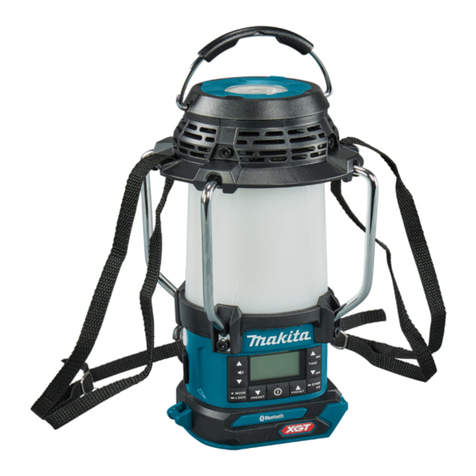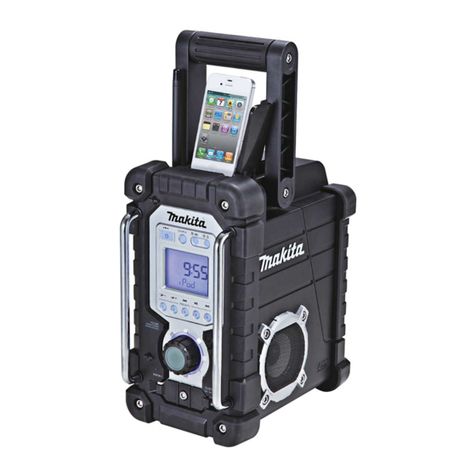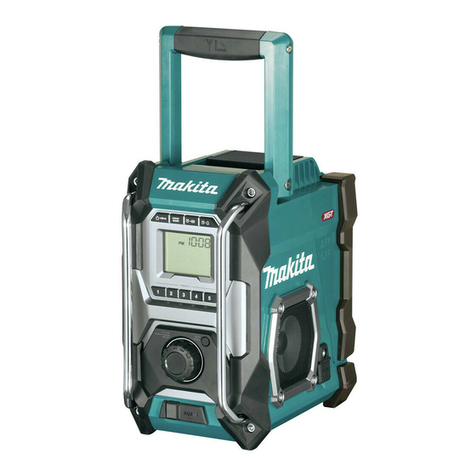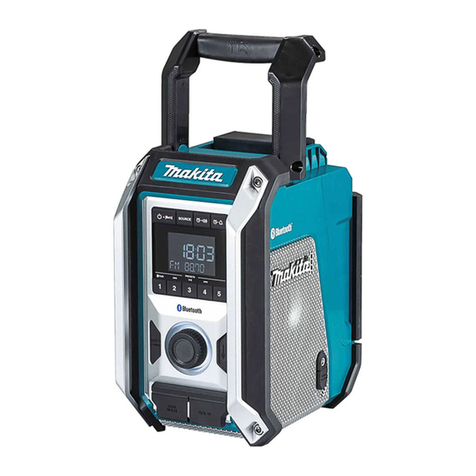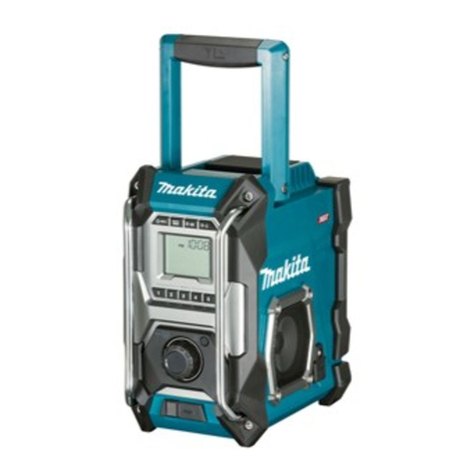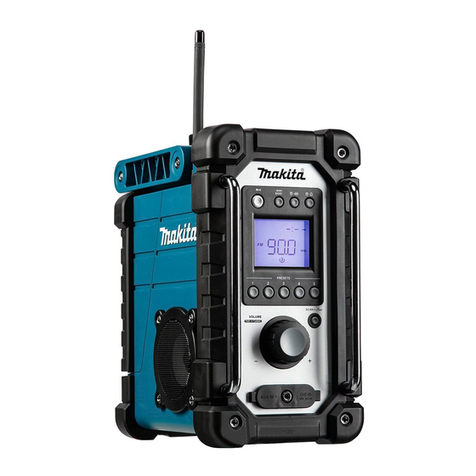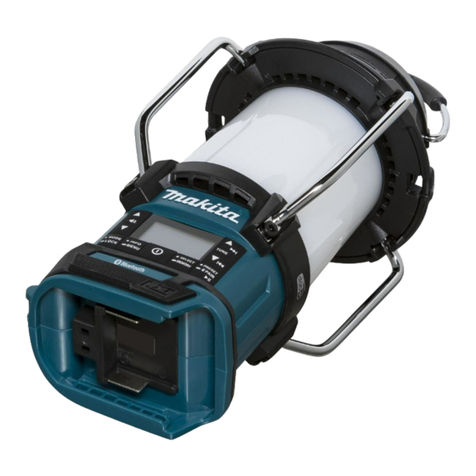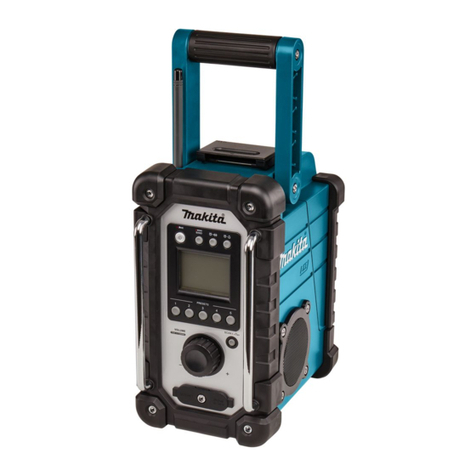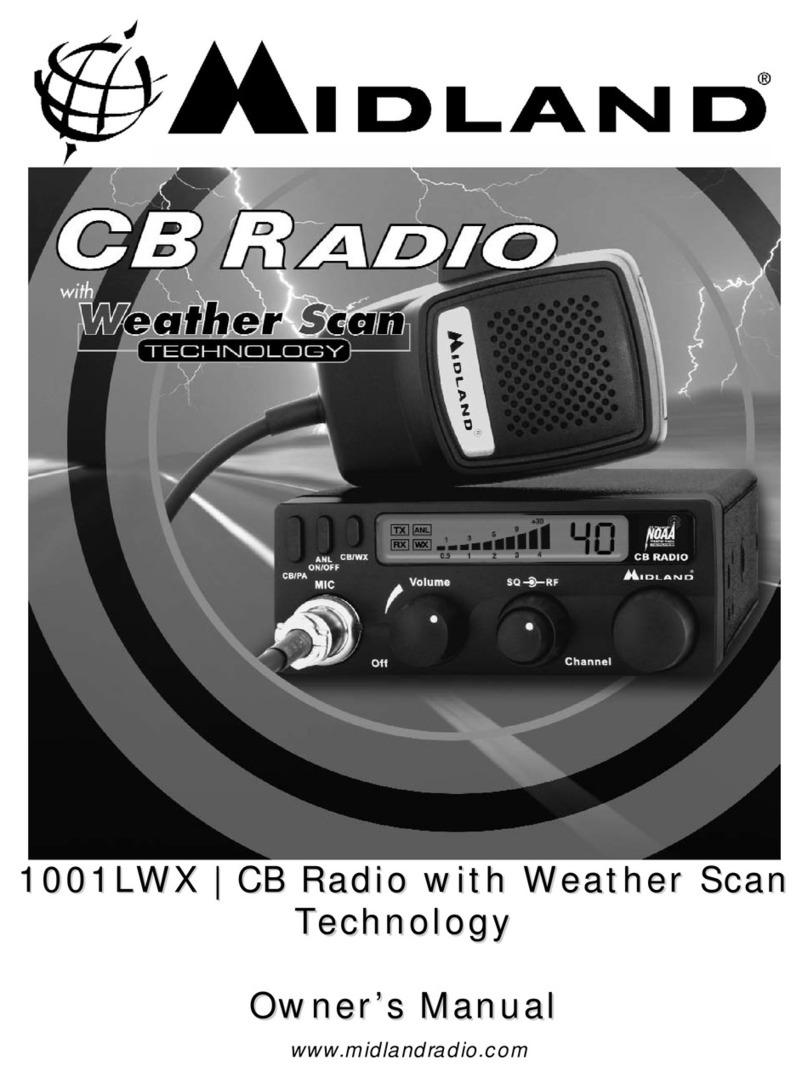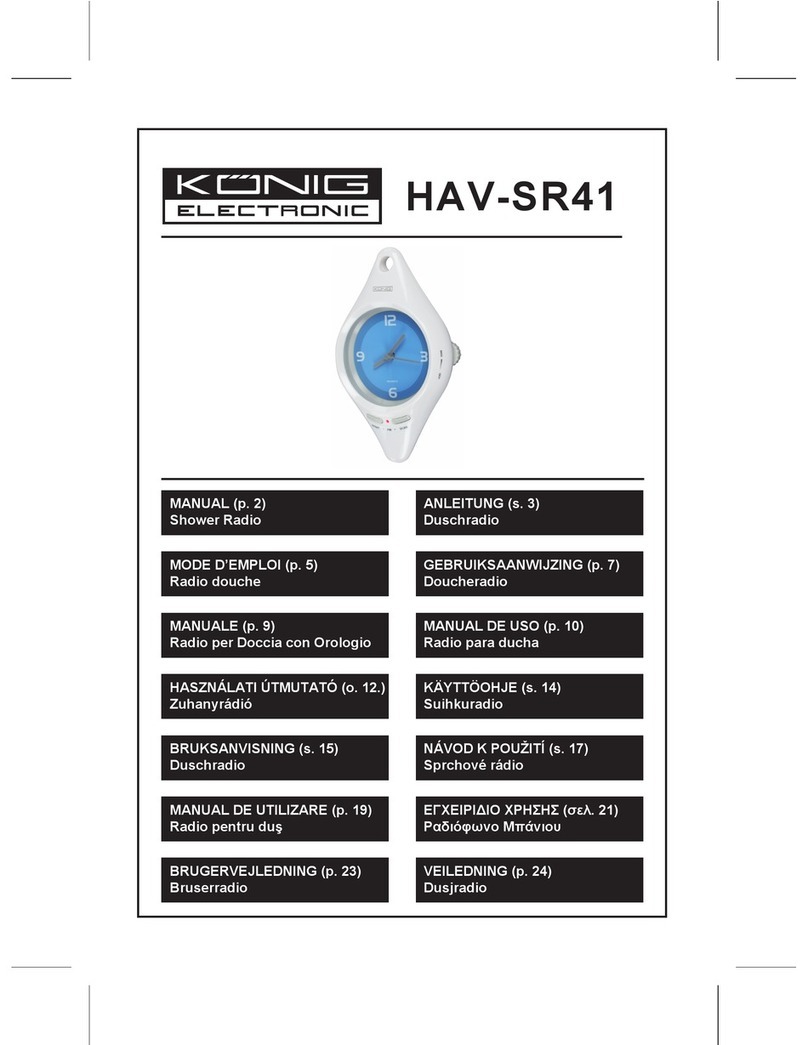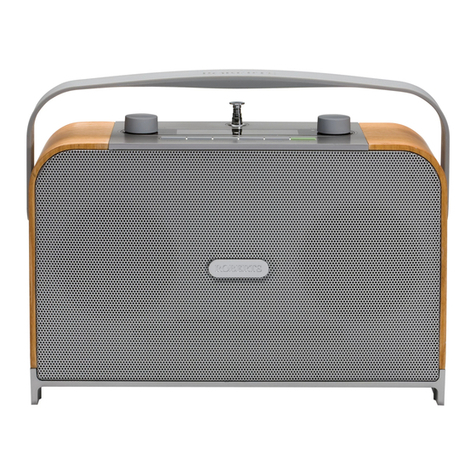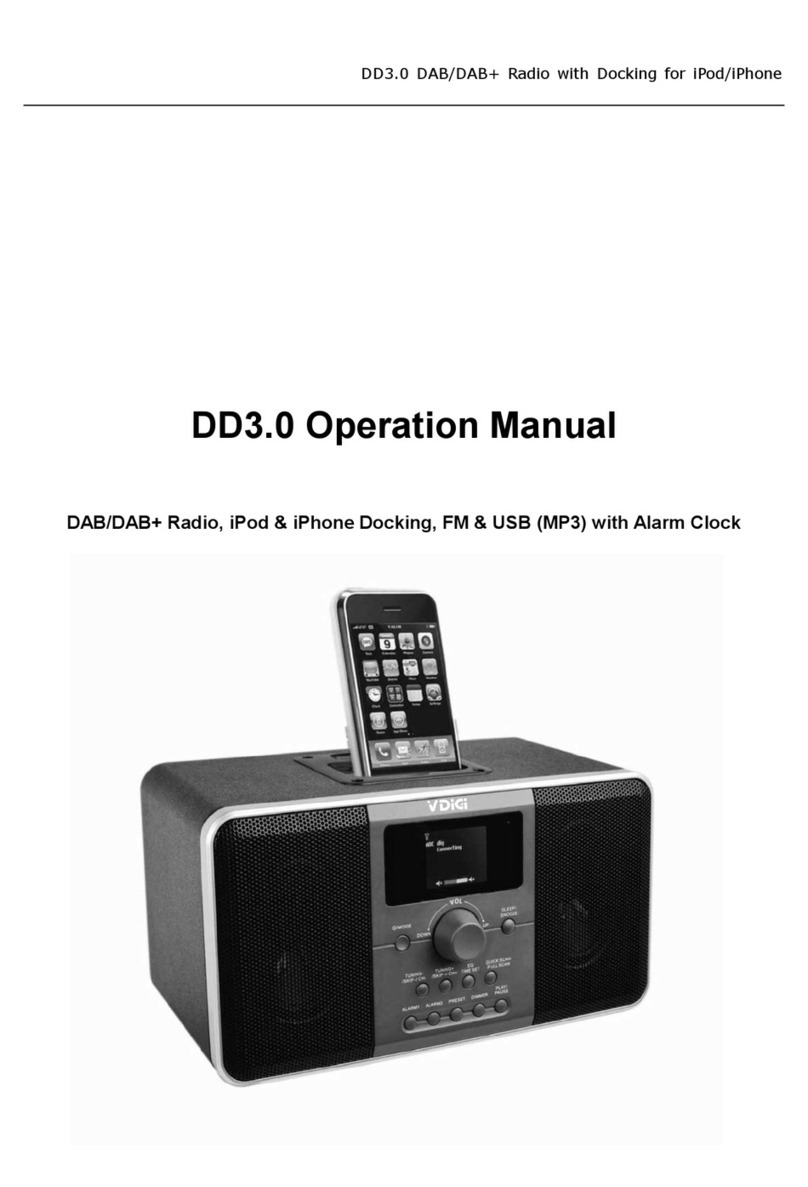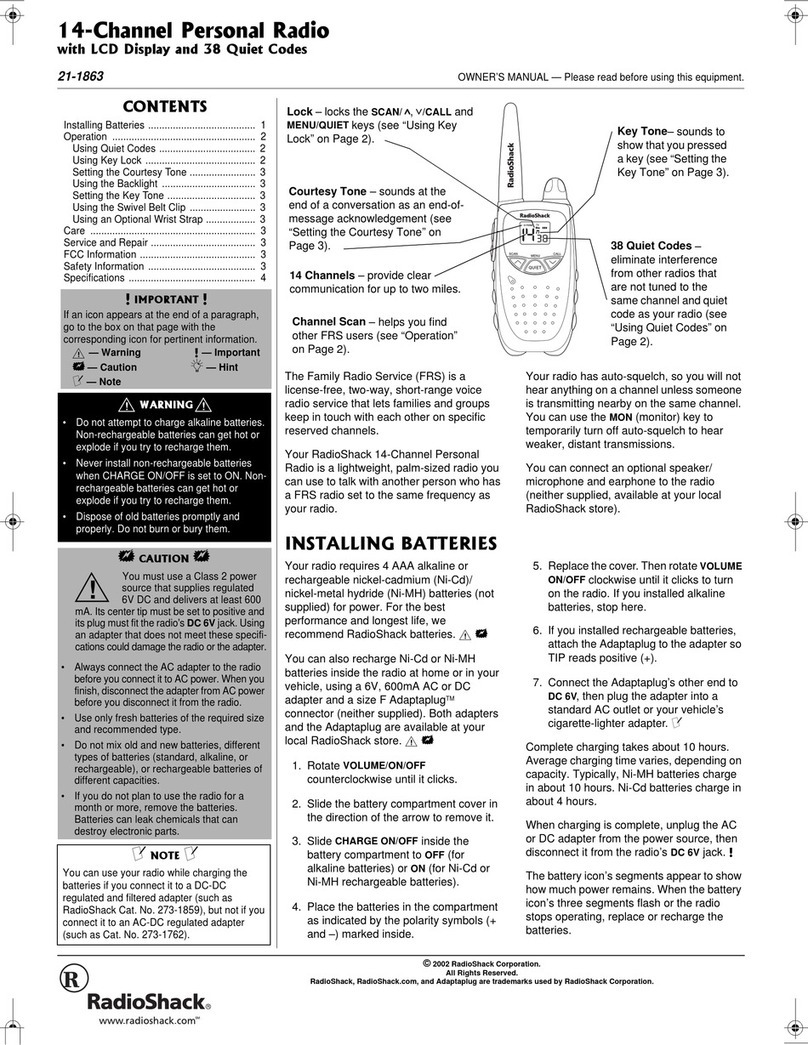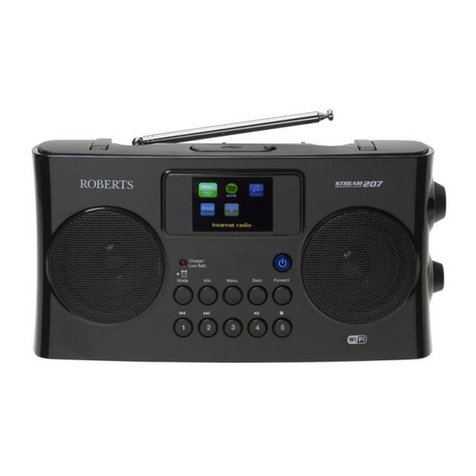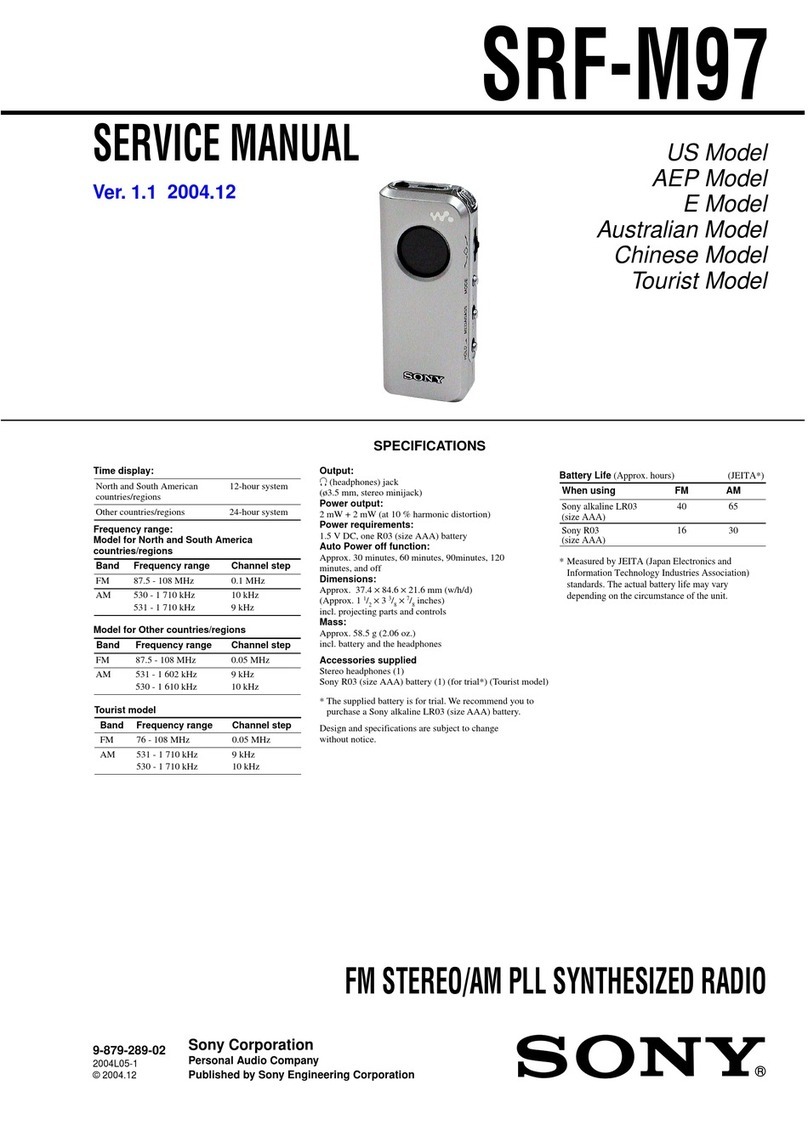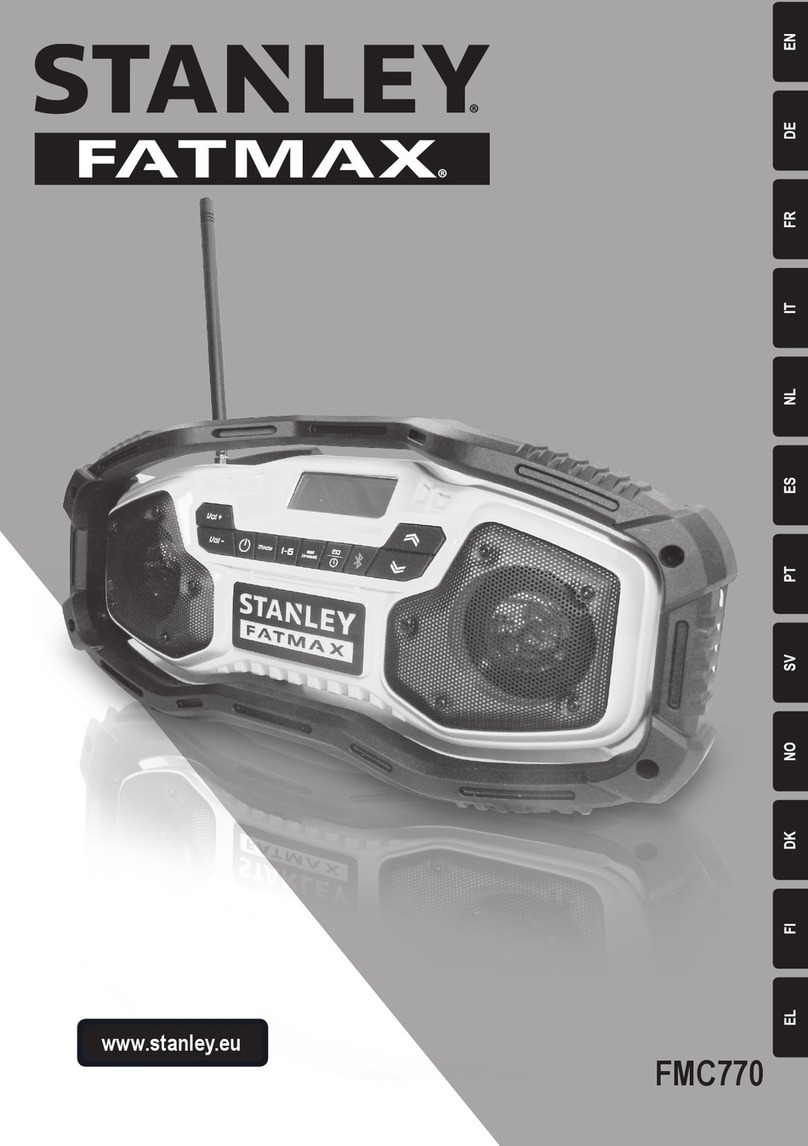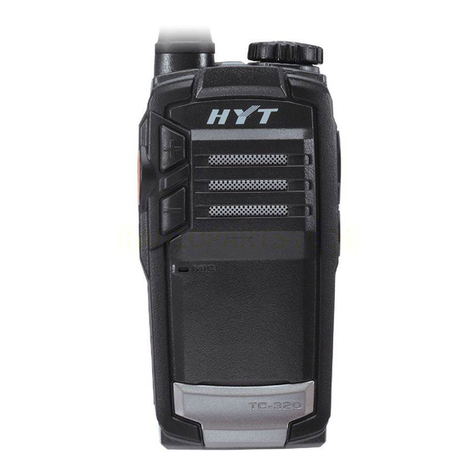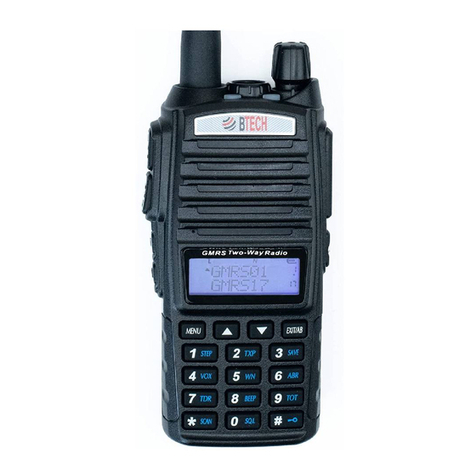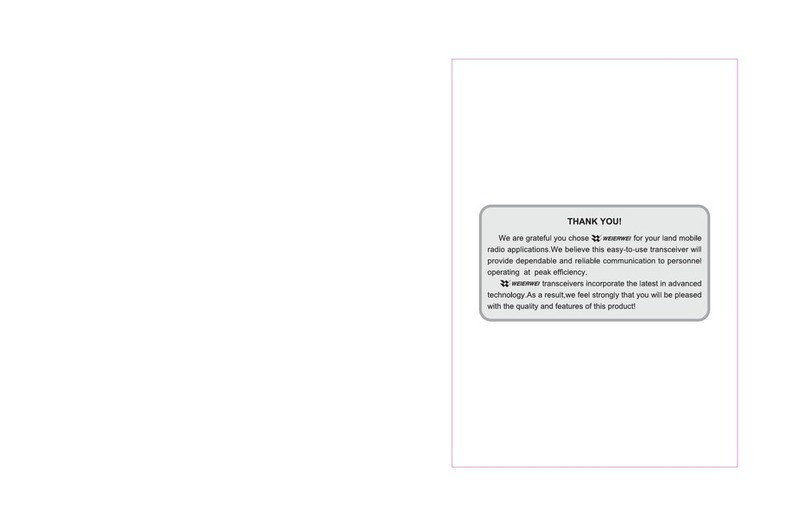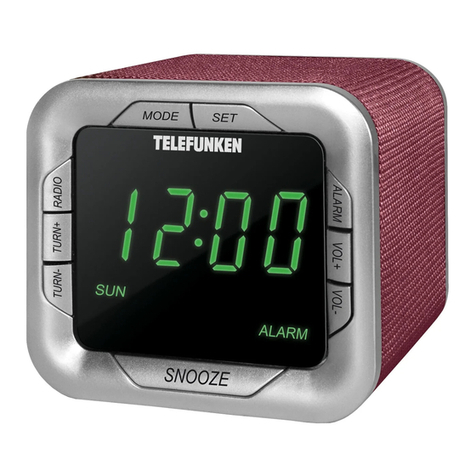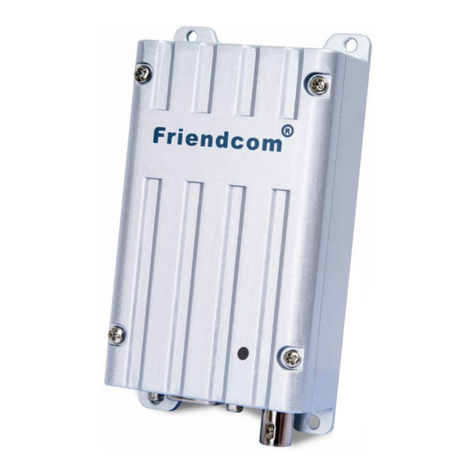
4 ENGLISH
responsible for their safety. Children should be
supervised to ensure that they do not play with
the product. Store the product out of the reach
of children.
19. %HFDUHIXOQRWWRSLQFK\RXU¿QJHUVZKHQ
opening and closing the battery cover.
20. Return the battery compartment locker to the
original position, after installing or removing
battery pack. If not, battery pack may accidentally
IDOORXWRIWKHUDGLRFDXVLQJLQMXU\WR\RXRUVRPH-
one around you.
21. Always close and lock the battery compart-
ment locker before moving the radio.
22. When the radio is powered from the battery,
switch off the radio before removing the bat-
tery pack.
23. Be careful not to drop or strike the radio.
%URNHQVKHOOPD\VODVK\RXU¿QJHURUVWDE
your body. Damaged radio may exhibit unpredict-
DEOHEHKDYLRXUUHVXOWLQJLQ¿UHH[SORVLRQRUULVNRI
LQMXU\
24. +DYHVHUYLFLQJSHUIRUPHGE\DTXDOL¿HGUHSDLU
person using only identical replacement parts.
This will ensure that the safety of the product is
maintained.
25. Do not modify or attempt to repair the appli-
ance or the battery pack except as indicated in
the instructions for use and care.
FCC statement
This device complies with part 15 of the FCC Rules.
2SHUDWLRQLVVXEMHFWWRWKHIROORZLQJWZRFRQGLWLRQV
This device may not cause harmful interference, and
(2) this device must accept any interference received,
including interference that may cause undesired
operation.
NOTE: This equipment has been tested and found
to comply with the limits for a Class B digital device,
pursuant to part 15 of the FCC Rules. These limits are
designed to provide reasonable protection against
harmful interference in a residential installation. This
equipment generates, uses and can radiate radio
frequency energy and, if not installed and used in
accordance with the instructions, may cause harmful
interference to radio communications. However, there is
no guarantee that interference will not occur in a partic-
ular installation. If this equipment does cause harmful
interference to radio or television reception, which can
be determined by turning the equipment off and on, the
user is encouraged to try to correct the interference by
one or more of the following measures:
— Reorient or relocate the receiving antenna.
— Increase the separation between the equipment
and receiver.
— Connect the equipment into an outlet on a cir-
cuit different from that to which the receiver is
connected.
— Consult the dealer or an experienced radio/TV
technician for help.
FCC CAUTION
&KDQJHVRUPRGL¿FDWLRQVQRWH[SUHVVO\DSSURYHGE\
the party responsible for compliance could void the
user’s authority to operate the equipment.
Makita U.S.A. Inc.
14930 Northam Street, La Mirada, CA 90638-5753,
USA
+1-(714) 522-8088
CAN ICES-3 (B)/NMB-3(B)
ISED Regulatory Compliance
This device contains licence-exempt transmitter(s)
that comply with Innovation, Science and Economic
Development Canada’s licence-exempt RSS(s).
2SHUDWLRQLVVXEMHFWWRWKHIROORZLQJWZRFRQGLWLRQV
1. This device may not cause interference.
2. This device must accept any interference, including
interference that may cause undesired operation of the
device.
RF Exposure Compliance
This equipment complies with FCC/IC radiation expo-
sure limits set forth for an uncontrolled environment.
This transmitter must not be co-located or operating in
FRQMXQFWLRQZLWKDQ\RWKHUDQWHQQDRUWUDQVPLWWHU
Important safety instructions for
battery cartridge
1. Before using battery cartridge, read all instruc-
tions and cautionary markings on (1) battery
charger, (2) battery, and (3) product using
battery.
2. Do not disassemble or tamper the battery
cartridge.,WPD\UHVXOWLQD¿UHH[FHVVLYHKHDW
or explosion.
3. If operating time has become excessively
shorter, stop operating immediately. It may
result in a risk of overheating, possible burns
and even an explosion.
4. If electrolyte gets into your eyes, rinse them
out with clear water and seek medical atten-
tion right away. It may result in loss of your
eyesight.
5. Do not short the battery cartridge:
(1) Do not touch the terminals with any con-
ductive material.
(2) Avoid storing battery cartridge in a con-
tainer with other metal objects such as
nails, coins, etc.
(3) Do not expose battery cartridge to water
or rain.
A battery short can cause a large current
ÀRZRYHUKHDWLQJSRVVLEOHEXUQVDQGHYHQD
breakdown.
6. Do not store and use the tool and battery car-
tridge in locations where the temperature may
reach or exceed 50 °C (122 °F).
7. Do not incinerate the battery cartridge even if
it is severely damaged or is completely worn
RXW7KHEDWWHU\FDUWULGJHFDQH[SORGHLQD¿UH
8. Do not nail, cut, crush, throw, drop the battery
cartridge, or hit against a hard object to the
battery cartridge. Such conduct may result in a
¿UHH[FHVVLYHKHDWRUH[SORVLRQ
9. Do not use a damaged battery.
10. The contained lithium-ion batteries are subject
to the Dangerous Goods Legislation require-
ments.
For commercial transports e.g. by third parties,
